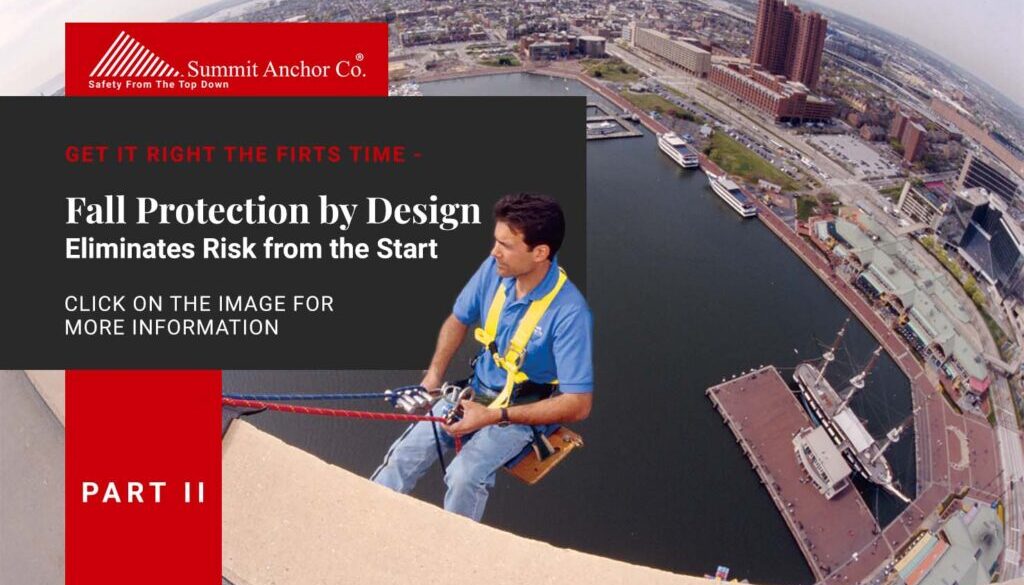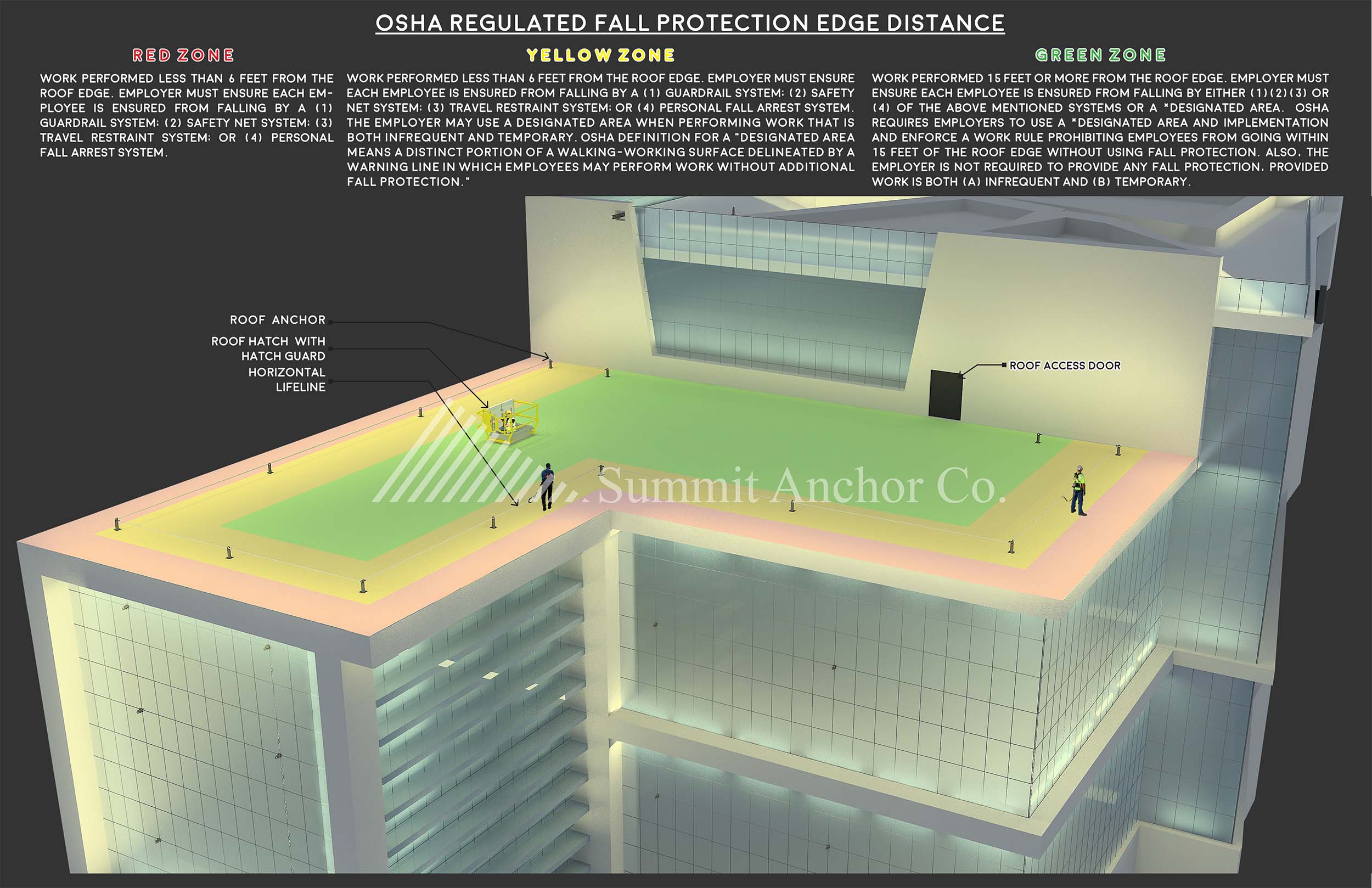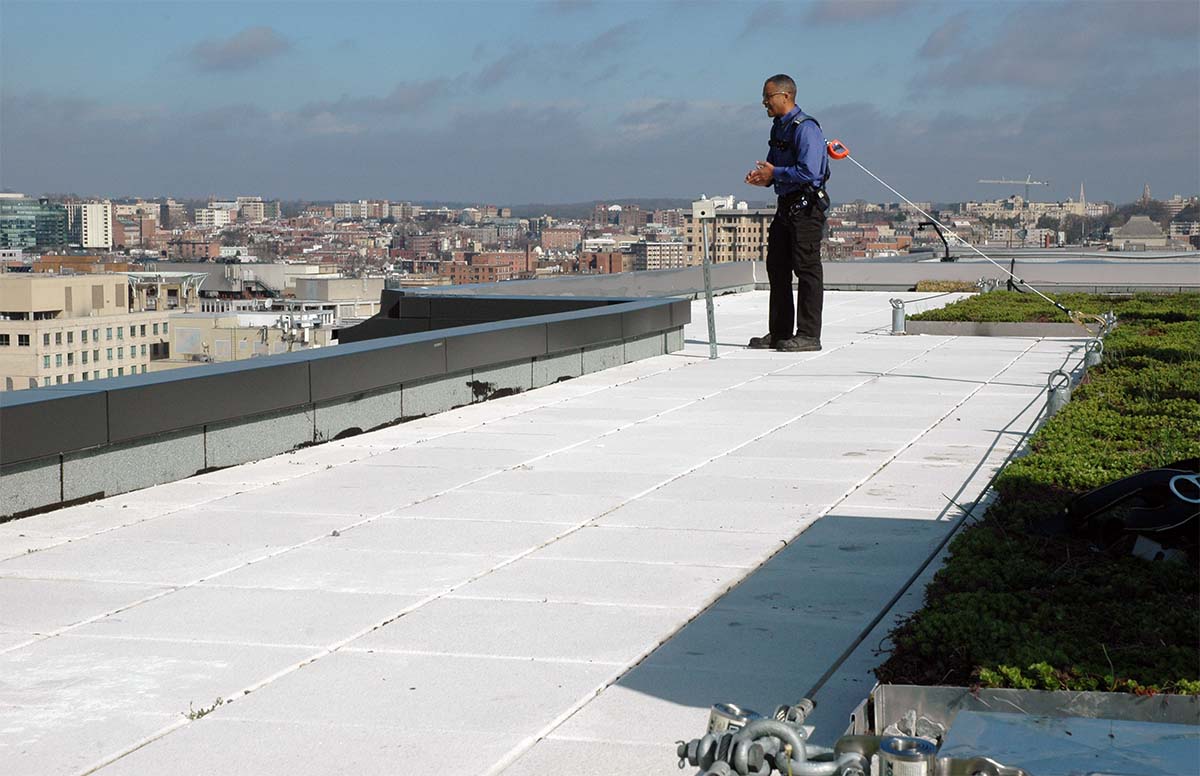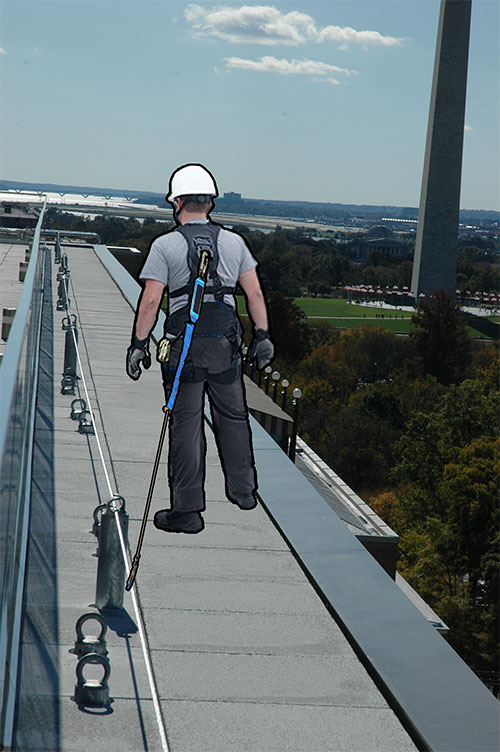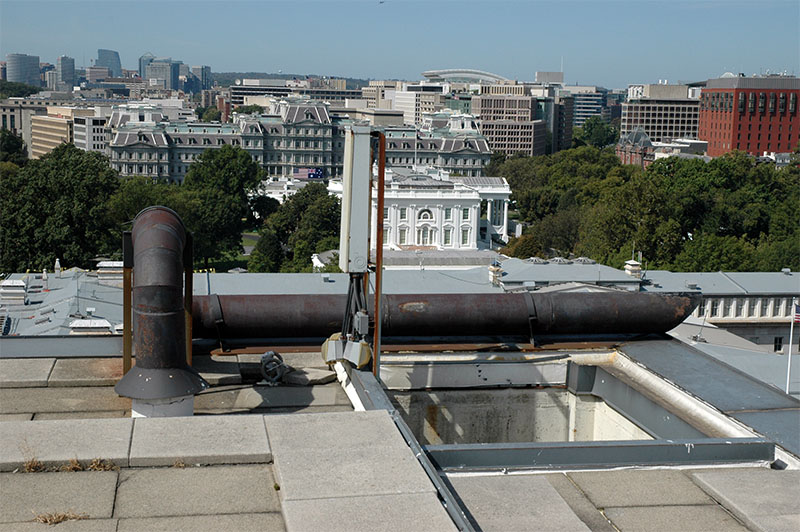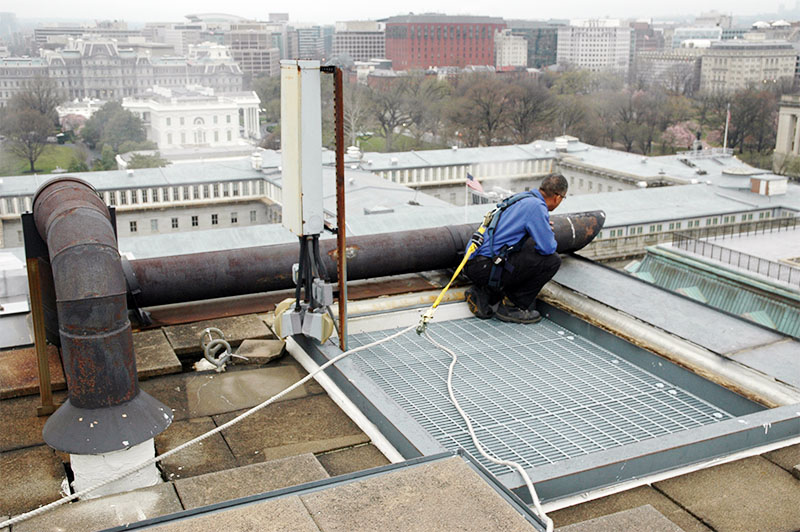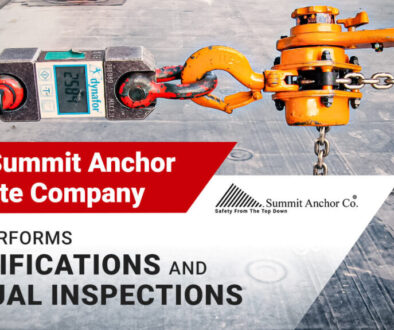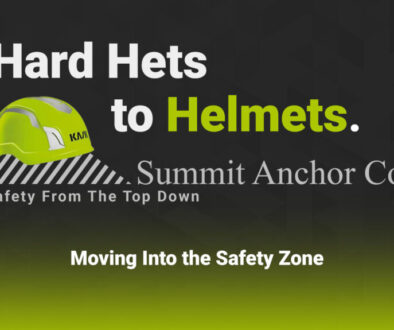Get it Right the First Time —
Fall Protection by Design
Eliminates Risk from the Start
PART II
By Gus Strats – Summit Anchor Company, Inc. March 3rd, 2022
Edited by – Keisha Winston
“An ounce of prevention is worth a pound of cure.” That’s a saying that holds true in life and in designing fall protection systems. Basically, starting out with the best fall protection design means eliminating hazards in the first place.
Below is the hierarchy of fall prevention measures, starting from ideal to the least effective:
- Eliminating the hazard
- Passive System
- Travel Restraint System
- Fall Arrest System
Since we can’t get around buildings having roofs, which are inherently dangerous, let’s consider these methods of fall mitigation, saving the best – eliminating hazards – for last.
Passive System:
When workers access a roof, a 42-inch guardrail is the preferred fall protection method. This is because a guardrail is a passive system that doesn’t require special training or equipment. Fortunately, an intact guardrail works 24 hours a day, seven days a week. That said, it is far better to locate equipment on the inboard side of a guardrail when one exists than on the outboard side. More on that later in this piece.
Travel Restraint System:
A travel restraint system is the next best option. According to OSHA, travel restraint is a combination of an anchorage, anchorage connector, lanyard (or other means of connection), and body support that an employer uses to eliminate the possibility of an employer going over the edge of a walking-worker surface.
Above Travel Restraint System
Fall Arrest System: A personal fall arrest system, according to OSHA, is a system used to arrest an employee in a free fall from a working-walking surface. It consists of a body harness, anchorage, and connector. The means of connection may include a lanyard, deceleration device, lifeline, or a suitable combination of these. A fall arrest system is the least desirable option. This is because, instead of eliminating a fall, the worker’s fall in progress is stopped with his personal fall arrest equipment. Then, once his fall is arrested the worker must be rescued before any medical complications arise.
With common sense design in mind, let’s review a few case studies on how a fall hazard can be either eliminated or mitigated, the ideal choice in fall safety.
Case Study One: Best Placement of Suspended Access Equipment
In this case, Example #1 is a far safer way to access, set up and transition from the roof to the building facade. But in Example #2, users are forced to get within six feet of the roof edge to set up and transition from the roof to the facade. Also the worker is forced to use a fall arrest system, which has its own inherent risks.
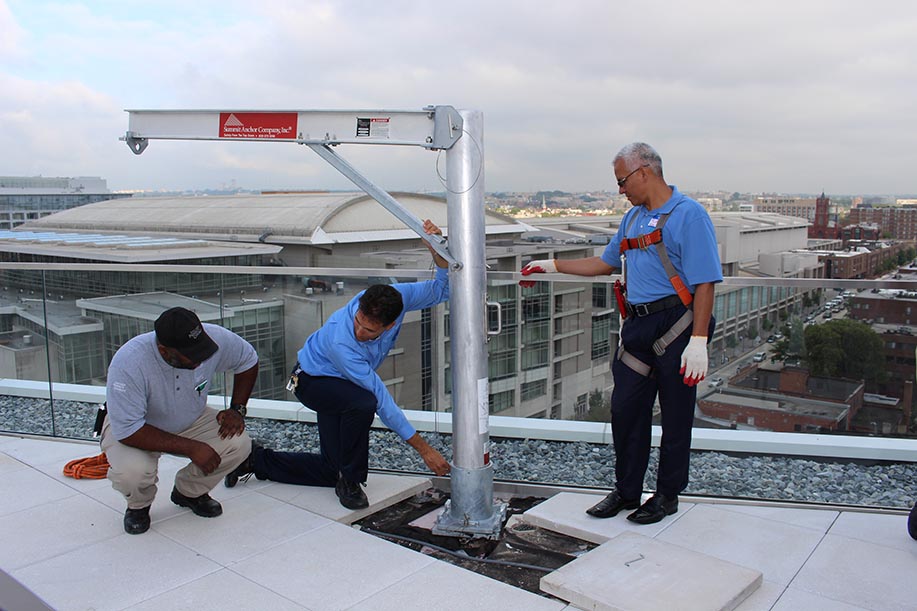
Example #1
Example #2
Above: Davit arm on the inboard side of a glass guardrail vs. anchorages on the outboard side of the glass guardrail forcing the worker to potentially have a fall that must be arrested.
Case Study Two: Open Pits vs. Covering Pits
The Willard Office Buildings, built in 1986 and designed to blend with the historic hotel, had an opening that was an obvious fall hazard. The hazard was eliminated with the installation of non-slip grating – in other words Fall Protection by Design.
Case Study Three: Temporary Ladder vs. Fixed Ladder
The temporary ladder (left) involved risks that could have led to serious injury and even death. The permanent ladder (right) eliminates the hazard of a ladder slipping from its base. According to a NIOSH study of 1,400 ladder accidents, 53 percent of the non-self-supporting ladders had not been secured or braced at the bottom, and 61 percent had not been secured at the top.
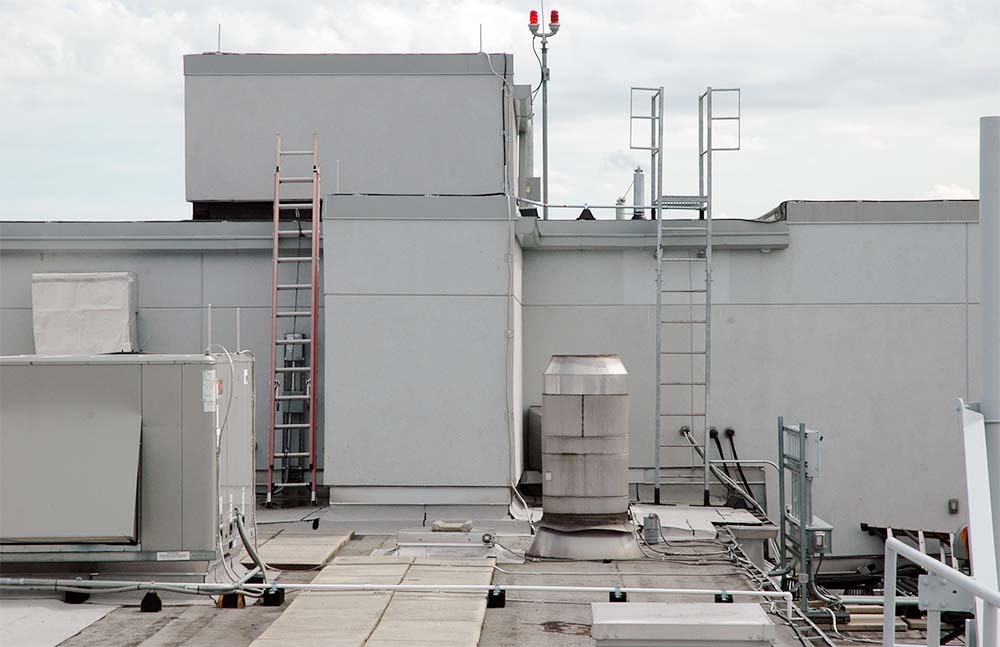
Good fall protection design from the start of a project helps eliminate and mitigate fall hazards. While requiring some knowledge and forethought, fall protection by design saves money and lives when it is done right the first time.
CONTACT US.
Whether your project is in Athens, Greece or Anchorage, Alaska, or all points in between, we are your full service fall protection provider.
Call Summit Anchor Company today to speak with one of our representatives.
